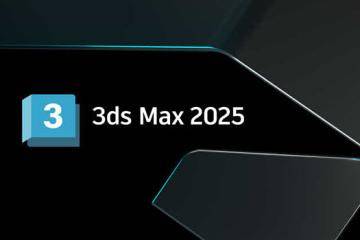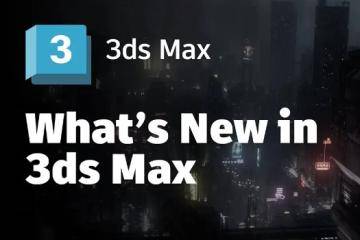News
Read the latest developments from ITOOSOFT

Autodesk has released 3ds Max 2025.3, featuring performance improvements, fixes to rigging tools, and a new material model that enhances compatibility between different applications and renderers.
With faster processing times for a couple of key modifiers, a new shading workflow thanks to OpenPBR, and some fixes to long-standing bugs in the built-in rigging tools, it's probably worth updating to the latest version of 3ds Max. Here's what's new and how our users might benefit:
Faster Processing for Array and Boolean Modifiers

The Array Modifier has received a speed boost, processing up to 250% faster than previous versions, depending on the complexity of the array. While it may not offer the same features or match the sophistication and efficiency of our RailClone plugin, we actually think the two work well together—particularly since the Array Modifier can work with splines that can later be used as the source for a RailClone object. Expect a tutorial demonstrating that trick soon! In addition, the Boolean Modifier now performs up to 50% faster for volume-based meshing operations.
Animation Rigging Updates
Character animators will be pleased to see that CAT and Biped are getting some attention. Autodesk has addressed issues that caused inaccurate FBX warnings for CAT and Biped controllers during export.
Several CAT-specific bugs have been fixed, including issues with disabling CAT rig evaluation during scene loading, deleting, or cloning, which caused update problems and viewport glitches. Issues with the CATMotion Editor, such as using a path node or snapping footprints to a ground collider, have also been resolved, along with problems related to buttons opening controls in Track View and leftover footprint nodes when undoing after cloning a CAT rig.
For Biped, several longstanding issues have been addressed, such as translation issues for extra bones when loading FBX animation and MaxScript call problems for copy and paste.
OpenPBR Shading

Perhaps the most significant new feature of this release is the introduction of OpenPBR in 3ds Max. This open-source shading model, developed in collaboration with Autodesk and Adobe, replaces Autodesk Standard Surface and Adobe Standard Material. With improved material interoperability between applications, OpenPBR is supported in both Slate and Compact Material Editors and renders with the included MAXtoA 5.7.5. Other renderers will need to add support before we can benefit from the ability to easily swap between them, but if the initiative pans out as planned, this could mean easier round-tripping of scenes, including those that use Forest Pack and RailClone, with other platforms and renderers in the future.
USD for 3ds Max 0.9

The update to Universal Scene Description 0.9 includes the ability to view and edit prim properties directly in the Modify panel, making it easier to inspect and adjust USD-based assets. The ability to import USD curves as shapes should make it easier to combine ForestPack and RailClone with USD-imported paths, as will the addition of snap-to-prim vertices, faces, and edges to help accurately place elements created using Forest Pack or RailClone with USD-based geometry.
Arnold 5.7.5
The new features in MAXtoA 5.7.5 include support for OpenPBR Surface Shading, improvements to volume rendering, and OIDN support for AMD GPUs. This update introduces a new sheen/fuzz model and improvements in metal reflectivity, which are important for creating realistic metal and fabric materials.
There's also much faster startup times for GPU rendering and improved denoising quality with Intel Open Image Denoise 2.3.0.
For more information about the 3ds Max 2025.3 update, visit the official Autodesk documentation: 3ds Max 2025.3 Help.


